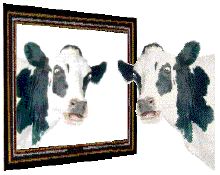by Joel A. English
Ball State University

Abstract
"Metacognition" refers to a writer's knowledge of the way she writes or how she learns. In Educating the Reflective Practitioner, Donald A. Schon divides metacognition into two brands of reflection: reflection-in-action and reflection-on-action. Reflection-in-action refers to the immediately recursive thought a person puts toward the action at hand, and reflection-on-action is post-activity reflection on the activity. Reflection on the reading, writing, and learning processes might well be our students' key to understanding their writing processes and to growing as successful writers. It is our job, then, to find activities that facilitate our students' metacognitive action.
The synchronous internet forum called the MOO offers such activities. MOO-based conferencing begins with an interactive dialogue-based form of writing, it produces a learning text (the log of the conversation), and it allows writers to read back through, respond to, and learn from the online activity. The MOO-based classroom fosters a form of written metacognition that is extremely valuable for writers, and the texts that online discussions produce serve as concrete, analytical maps of students' online learning. MOO-based activities offer the composition classroom a forum for continual reflection on the writing process and a new avenue for metacognition.
This web was peer-reviewed by Lee Honeycutt and Dickie Selfe of the Kairos Editorial Board.
Contact Joel A. English by e-mail.
About the External Links


